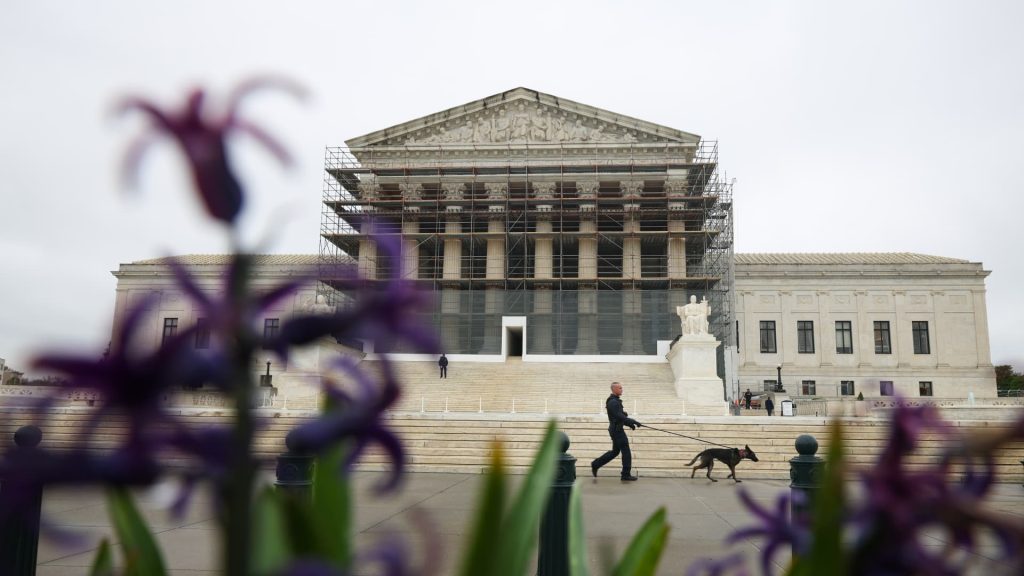In a significant ruling regarding the separation of church and state, the U.S. Supreme Court recently deadlocked 4-4 on a case concerning the establishment of a religious public charter school in Oklahoma. This decision maintains the Oklahoma Supreme Court’s ruling, which determined that the proposed St. Isidore of Seville Catholic Virtual School would violate both federal and state laws. The division among the justices highlights ongoing debates about the role of religious schools and taxpayer funding in the education system, as well as the complexities of the First Amendment.
| Article Subheadings |
|---|
| 1) Supreme Court’s Decision Explained |
| 2) Implications of the Ruling |
| 3) Overview of St. Isidore’s Proposal |
| 4) Historical Context of Church-State Separation |
| 5) Future of Religious Charter Schools |
Supreme Court’s Decision Explained
On April 7, 2025, the U.S. Supreme Court remained deadlocked on a pivotal case regarding the establishment of a religious public charter school in Oklahoma. The court’s 4-4 split resulted in upholding a previous ruling by the Oklahoma Supreme Court, which declared that the proposed St. Isidore of Seville Catholic Virtual School violated both the federal Constitution and state laws concerning the separation of church and state. Notably, the Supreme Court did not provide a written opinion, leading to speculation on how each justice may have voted, particularly as the participation of Justice Amy Coney Barrett was absent. This case underscores the challenge of balancing the Establishment Clause, which prohibits government endorsement of religion, with the Free Exercise Clause, which protects the rights of religious individuals and groups.
Implications of the Ruling
The deadlock results in serious implications for Oklahoma and the broader debate over the role of religious institutions in public education. By not issuing a majority opinion, the Supreme Court’s decision fails to set a nationwide precedent on this contentious issue, leaving the door open for future litigation. Legal analysts suggest that the case might prompt additional challenges across the country, particularly in states that are considering similar proposals for religious charter schools. Furthermore, the split decision raises significant concerns among supporters of the school choice movement, who argue that denying access to religious schools limits educational opportunities for families.
Overview of St. Isidore’s Proposal
St. Isidore of Seville Catholic Virtual School was poised to operate as an online institution statewide, with an explicit mission to promote the Catholic faith. The proposal, initially approved by a state board in June 2023, was pushed forward by the Roman Catholic Archdiocese of Oklahoma City and the Diocese of Tulsa despite significant reservations regarding its religious character. Following the approval, Oklahoma Attorney General Gentner Drummond took legal action against the initiative, arguing that it infringed upon the constitutional separation of church and state. His stance was somewhat controversial within Republican circles, as many party members were in favor of religious charter schools.
Historical Context of Church-State Separation
The ruling on St. Isidore forms part of a broader dialogue on the complexities surrounding church-state relations in America. The First Amendment of the U.S. Constitution encompasses both the Establishment Clause and the Free Exercise Clause, leading to ongoing tensions in state and federal courts. For decades, debates have raged over what constitutes appropriate boundaries between religious organizations and government-funded programs. This decision reflects decades of legal interpretations that have reinforced the principle of separation while raising questions about the practical implications of such policies in an evolving educational landscape.
Future of Religious Charter Schools
While this particular proposal has been halted, the landscape for religious charter schools may continue to evolve. Advocates of school choice assert that public funds should support a variety of educational options, including those provided by religious organizations. However, opponents contend that allowing public funding of religious schools erodes the secular nature of education and promotes favoritism towards specific belief systems. Legal experts anticipate that the Supreme Court may soon find itself reexamining these issues as new cases arise, thus shaping the future abilities of religious schools to participate in taxpayer-funded education programs.
| No. | Key Points |
|---|---|
| 1 | The U.S. Supreme Court’s deadlock maintains the Oklahoma Supreme Court’s ruling against St. Isidore Catholic School. |
| 2 | Justice Amy Coney Barrett did not participate in the case, affecting the court’s composition. |
| 3 | The court’s decision raises questions regarding future cases on religious schools and taxpayer funding. |
| 4 | The ruling has broader implications for the school choice movement in the United States. |
| 5 | The debate over the Establishment and Free Exercise Clauses remains a contentious issue in American jurisprudence. |
Summary
The Supreme Court’s recent deadlock signifies a critical moment in the ongoing discourse surrounding education, religion, and public policy. As debates about the role of religious institutions in public educational systems intensify, the ruling reinforces existing barriers while leaving the possibility for future challenges open. The case of St. Isidore serves as a focal point for broader conversations about the rights of religious groups and the necessity of maintaining a secular educational framework. As such, it is likely that this issue will continue to evolve, with potential implications reaching far beyond Oklahoma’s borders.
Frequently Asked Questions
Question: What was the outcome of the Supreme Court’s recent decision on the St. Isidore school?
The U.S. Supreme Court deadlocked 4-4, thereby upholding the Oklahoma Supreme Court’s ruling that the proposed St. Isidore Catholic Virtual School violated the Constitution and state laws.
Question: What are the Establishment and Free Exercise Clauses?
The Establishment Clause prohibits the government from endorsing or favoring a religion, while the Free Exercise Clause protects individuals’ rights to practice their religion freely without government interference.
Question: What are the implications of this ruling for the future of religious charter schools?
While this ruling halts the St. Isidore proposal, it does not resolve the larger debate on religious charter schools. Future cases may further clarify the legal landscape regarding taxpayer funding for religious education.
